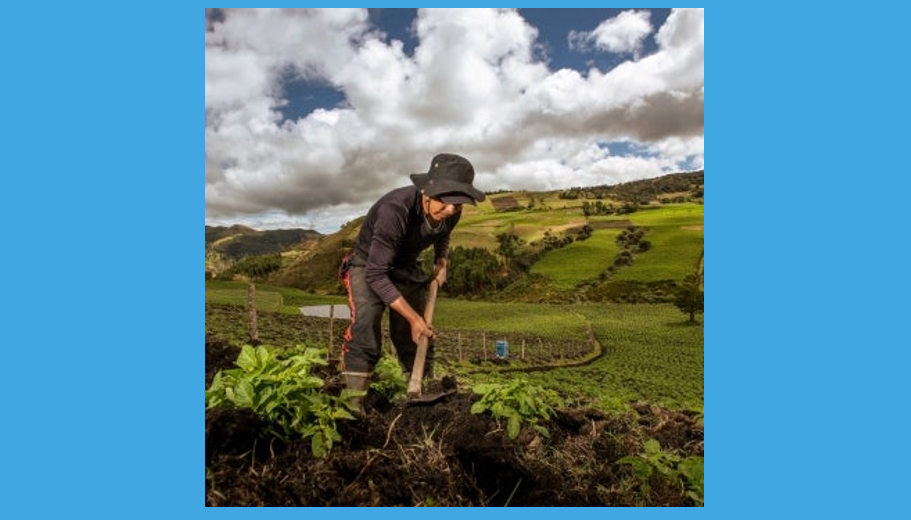As climate impacts intensify, the people most at risk remain the least financed. While adaptation — the act of strengthening communities to withstand climate shocks — is by necessity local, global capital flows haven’t followed suit, with less than 1% of global climate finance going toward community adaptation.
The result is that those on the frontlines of climate change — the farmers needing climate resilience seeds and better irrigation systems, the microentrepreneurs rebuilding after storms, and the households in need of green technologies to secure their futures — are being left behind.
The crux of the problem is that community-led adaptation efforts have historically been hard for investors to access. A problem exacerbated by a climate finance system built on big ticket sizes, risk perceptions that keep capital in safe markets, and lengthy bureaucratic processes – all of which lock communities out.
Inclusive finance—financial systems designed to serve low-income and climate-vulnerable populations—presents a solution to finance climate adaptation, but it is not yet attracting the investment interest that it deserves.
Inclusive finance has high fiduciary standards, a track record of impact, and decades of experience in delivering small-ticket financing to empower vulnerable populations at the last mile on a financially sustainable basis. This is done through thousands of inclusive finance institutions that operate in almost all emerging and frontier markets. Thanks to this professionalism, wide reach, and high diversification, inclusive finance has become an asset class that has offered a modest but steady financial return over the last two decades, including during crises.
Inclusive finance—financial systems designed to serve low-income and climate-vulnerable populations—presents a solution to finance climate adaptation, but it is not yet attracting the investment interest that it deserves.
Inclusive finance investment can also generate significant co-benefits. Unlocking green technologies for low-income households is one example of this. The high upfront cost of green technologies often puts them out of reach for low-income and climate-vulnerable communities, but pairing green technology business models with flexible and affordable financing can help to overcome affordability constraints, in turn helping inclusive business models to scale and generate returns for investors.
The successful scaling of the pay-as-you-go solar industry shows the potential for achieving adaptation goals and delivering for investors; embedded credit has powered the industry towards reaching 25-30 million customers in emerging markets and provided a blueprint that has since paved the way for pay-as-you-go models to be scaled for other green technologies, including ethanol cookstoves, electric vehicles, and solar irrigation systems.
CGAP’s Investor Roadmap for Inclusive Green Growth, developed with LeapFrog Investments and Temasek, highlights the extensive co-benefits that such initiatives have for local communities – from job growth and economic opportunity to gains in productivity, health, and women’s empowerment. In East Africa, for example, 28% of rooftop solar customers generate additional household income from their home systems, and 34% of customers report that at least one family member undertakes an additional economic activity with this new clean energy, with similar benefits reported in West Africa (14% and 19%) and South Asia (11% and 12%). Solar customers, especially women, have also reported using cheap renewable energy to run phone charging businesses, improve their internet connectivity, extend the trading hours of their stores with improved lighting, provide entertainment to customers, and save time previously spent purchasing energy products like wood and kerosene.
Similarly, switching to clean cookstoves has been shown to reduce user exposure to harmful smoke and reduce the time needed for collecting firewood and cooking, alleviating a burden that often limits women and girls’ ability to earn an income and pursue education.
In addition to these co-benefits, green technologies like solar water pumps and biodigesters that support climate adaptation through resilience building and income diversification ensure users are better able to repay loans, in turn enabling financial service providers to scale and offer their investors more attractive returns.
An increasing number of studies highlight this potential for significant ROI from investments in adaptation and resilience: a recent World Resources Institute study, for example, found average returns of 20–27% for adaptation and resilience investments across 12 countries, while a new global report by Systemiq points to investments in adaptation delivering four times more benefits than costs, with an average annual return rate of 25%.
Yet despite this potential for strong returns and co-benefits, inclusive adaptation finance remains one of the most undervalued investment classes: new research from Systemiq finds that for every $1 spent on resilient infrastructure, $87 continues to go into assets that ignore climate and nature risks.
Despite its potential for strong returns and co-benefits, inclusive adaptation finance remains one of the most undervalued investment classes.
Systematic mispricing of risks in emerging markets and developing economies (EMDEs) is a major reason for this underinvestment. Investment committees often default to sovereign credit ratings and currency risk assessments that systematically skew against low-income countries, regardless of actual sector performance. The IFC’s analysis of the GEMS database (covering 26 multilateral development banks and DFIs) found that, for EMDEs, the default rates are 2 to 3 times lower than what would be implied by the historical sovereign credit ratings, suggesting that risks in emerging markets are systematically overstated and investments are mispriced.
Another factor is that activities that need to be financed to improve climate adaptation are often linked to the agriculture sector, which has proven difficult to finance on a fully commercial basis.
A final contributing factor is that many of the aforementioned ROI statistics incorporate collective, social benefits, which don’t always directly translate into individual financial benefits.
Taken together, this means that many of these investment opportunities are likely to be difficult to finance on a purely commercial basis — at least until more evidence of strong individual returns is available — and that they will require some form of public finance to scale initially.
Blended finance approaches — including first loss cover, guarantees, concessional financing, insurance against excessive risks, technical assistance, and impact-linked incentives — are, therefore, an equally critical part of the puzzle. However, while several versions of these blended finance instruments have already been launched, most remain relatively small-scale, hindered by the complexity and bespoke nature of blended finance instruments, which can make them slow to roll out. Improving the design of blended finance instruments to be able to scale them is an urgent priority.
To close the inclusive adaptation finance gap, governments, development banks, and private investors must act together.
To close the inclusive adaptation finance gap, governments, development banks, and private investors must act together: recalibrating risk assessments for EMDEs based on real performance data; improving the measurement and sharing of data on ROI and co-benefits; and simplifying and scaling blended finance structures so that private capital can move faster and reach further.
The alternative is stark. If adaptation remains underfunded, climate shocks will erode resilience and productivity, not only trapping millions in poverty, but also destabilizing food systems, markets, and the very growth that investors rely on. Investing in resilience is not just a moral imperative for the private sector: It is an economic necessity for a broad range of public and private stakeholders, essential for ensuring long-term global stability.



